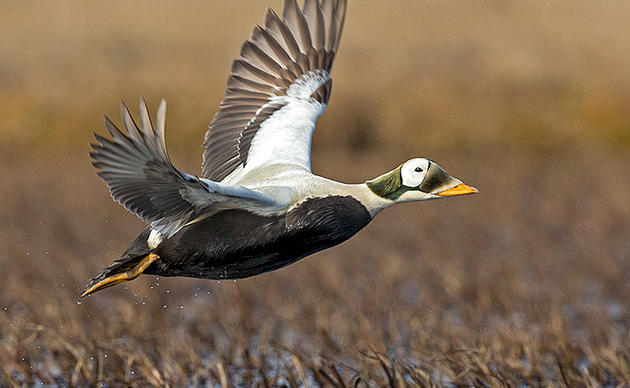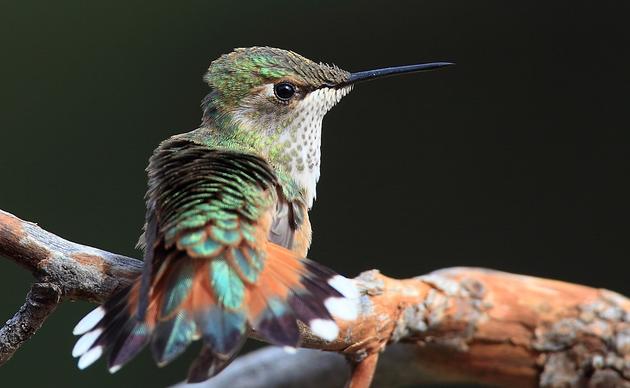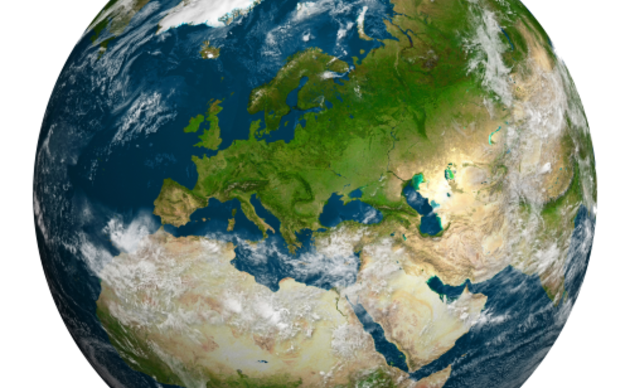If you’re just visiting the community of Utqiaġvik in Alaska’s North Slope Borough, leaving is hard. Especially if you’re a birder, and especially if you’re there in late spring.
“Life abounds in the Arctic,” says Lindsay Hermanns, organizer of the Utqiaġvik Migratory Bird Festival. That truth is perhaps nowhere more visible than during spring migration, when tens of thousands of shorebirds, waterfowl, and seabirds arrive in the tundra wetlands around Utqiaġvik. Here, at the northernmost point in the United States, birders can easily spot American Golden-Plovers (Tulik, Tullik, Tuulligłuk), Snowy Owls (Ukpik), Steller’s Eiders (Igniqauqtuq), Black Brant (Niġlinġaq), Tundra Swans (Quġruk, Qugruk), Baird’s Sandpipers (Puvviaqtuuyaaq, Nuvaksruk), and many more must-see species.
This landscape is special, and it’s starting to get more attention as a global bird hub.
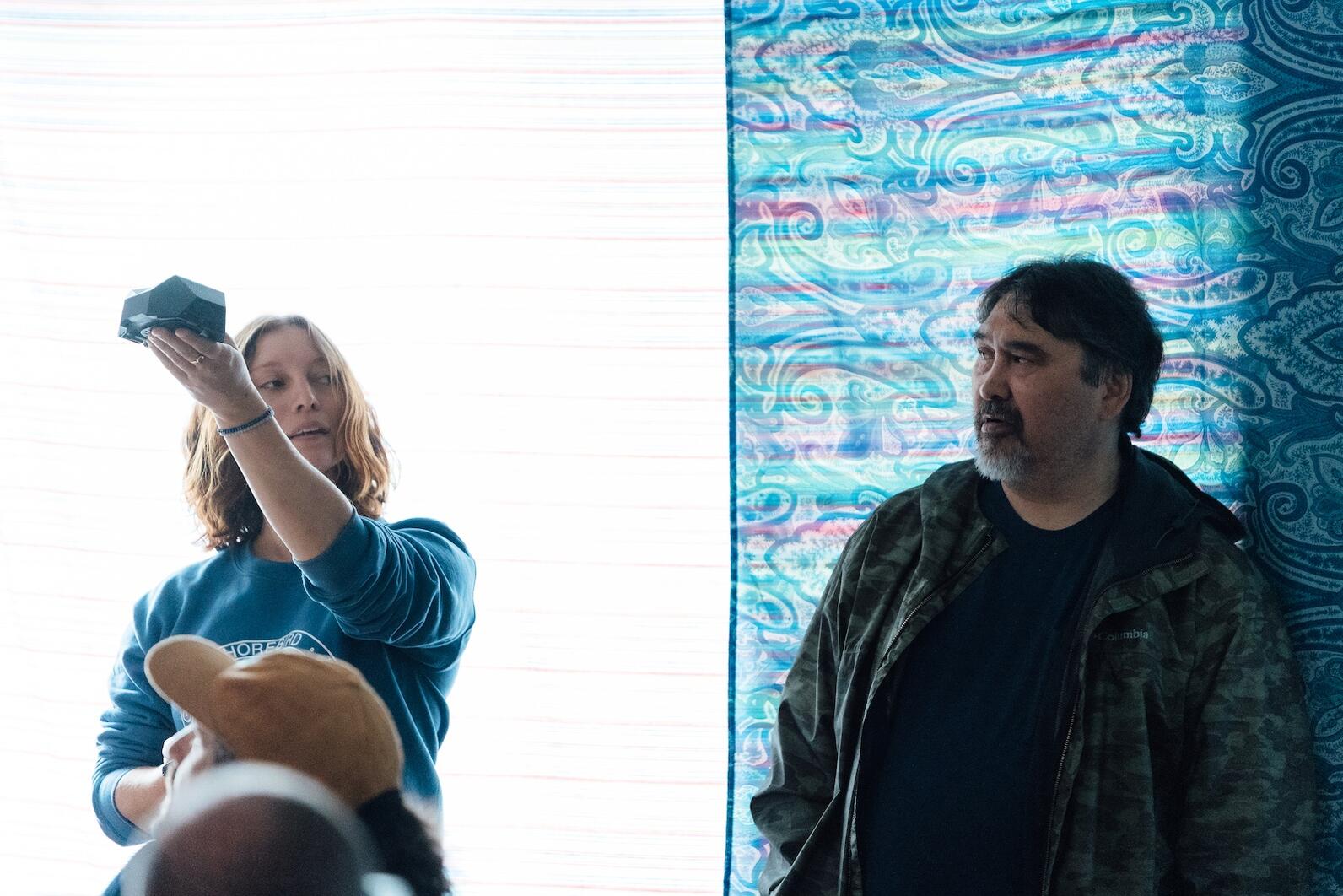
It Started With The Festival
The Utqiaġvik Migratory Bird Festival (set for June 12 to 15, 2025, at Fred Ipalook Elementary School) is a perfect example of how conservation and culture can come together, as it has since the inaugural event in 2023. It continues to showcase “just how amazing and unique of a spot that it is, and how critical that geography is to a lot of migratory birds,” Hermanns said in a story about Alaska’s bird festivals from 2024. The festival was also designed to underscore how important the area is for shorebirds, eiders, geese, and other waterfowl migrating through the region.
Organized by Hermanns and other folks affiliated with the U.S. Fish and Wildlife Service (USFWS) like avian biologists Richard Lanctot and Aaron Yappert, the event brings together community members, bird experts, artists, and agency partners to celebrate the arrival of migratory birds and the traditions they inspire.
For 2025, Hermanns (now with the National Park Service) and the gang plan to bring back the art night, the nature journaling and drawing workshops, science talks, and of course, the bird tours around town. All events are free and open to the community, but there is opportunity to buy merchandise sporting the 2025 logo featuring the Pomarine Jaeger (Isuŋŋaġluk, Isuŋŋaaluk) designed by Fairbanks artist Addie Willsrud. Any funds raised from these sales will secure future festivals and educational outreach events similar to this in Utqiaġvik and surrounding communities.
But the festival is not just about fun—it’s also about stewardship.
“[Festivals] can emphasize how the community values birds and subsistence and continue to propagate similar values of stewardship and excitement around conservation and sustainability,” Hermanns says.
There’s a caveat, though: festivals driven by outside interests, without community leadership or input, may offer only short-term benefits. Visitors might leave with an increased appreciation for bird conservation, but lasting impacts depend on local ownership and meaningful participation. That’s why the Utqiaġvik model is so powerful—it’s designed to be a special event for residents that, yes, connects the community and nature, but also generations of Iñupiat peoples and those local to the North Slope.
“In my time in the Arctic, I've noticed that there is a strong link between elders and youth in the community,” Hermanns says. “I could envision children's or youth programs would benefit from continuing to bridge this connection, especially relating to birds and the birding trail through art form, subsistence, community birding walks, and transferring historical, traditional, and scientific knowledge to each other.”

A Window Into the Arctic
Now in its third year, the Utqiaġvik Migratory Bird Festival will also act as a launchpad for the recently finalized Utqiaġvik Birding Trail—a collaboration with USFWS, the Alaska Department of Fish and Game (ADF&G), Ilisaġvik College, Iñupiat Heritage Center, North Slope Borough Department of Wildlife Management, UIC Science, Tuzzy Consortium Library, and Audubon Alaska.
Many thanks go to the above-mentioned festival organizers like Hermanns and Yappert, as well as Iñupiat language resources like Iñupiatun Uqaluit Taniktun Sivuniŋit, the official website of the North Slope Borough, and Indigenous Knowledge Liaison Robin Monġoyak.
A birding trail is a virtual, though not always linear, guide to birding hotspots within a specific geographic region. The Utqiaġvik Birding Trail offers site recommendations and descriptions, driving directions, special travel notes, and possible bird species sightings for bird tourists and Utqiaġvik residents. The trail details 10 sites throughout town, including the Stevenson Street Beachfront, Freshwater Lake at the end of Imaiqsaun Road, Nunavaaq Gravel Pit, and more.
Artist Eric Cline of TerraGraphica designed the brochure, which can be viewed at bit.ly/utq-birding-trail.
“This brochure nicely ties together the nuts and bolts of need-to-know information with the easy access birding must-see spots in Utqiaġvik,” says Carmen Daggett, an ADF&G area biologist residing in Utqiaġvik.
Hermanns agrees.
“I feel the birding trail highlights how unique and critical the Arctic landscape is for so many migratory bird species, and subsequently, how important migratory birds have been for Arctic communities to celebrate in a place many would characterize as a desolate place,” she says.
The Utqiaġvik Birding Trail was created as a community asset for economic development and educational purposes. Utqiaġvik is the economic, transportation, and administrative center of the North Slope Borough. Located on the Chukchi Sea coast, this is the northernmost community in the United States. It is traditionally known as Ukpeagvik, or “place where snowy owls are hunted.” Utqiaġvik was incorporated as a first-class city in 1958. We respectfully acknowledge that Utqiaġvik and the surrounding land belong to the Indigenous caretakers of Iñupiat heritage.
This trail follows the Southeast Alaska Birding Trail, which launched in 2020. Both trails, as well as existing trails in Anchorage, Fairbanks, and Kodiak, were created to make travel planning and visiting Alaska accessible to everyone, from seasoned local birders to bird-curious tourists, and were designed to foster sustainable economic development built around the bioregion and to grow Alaska's economy through bird tourism.
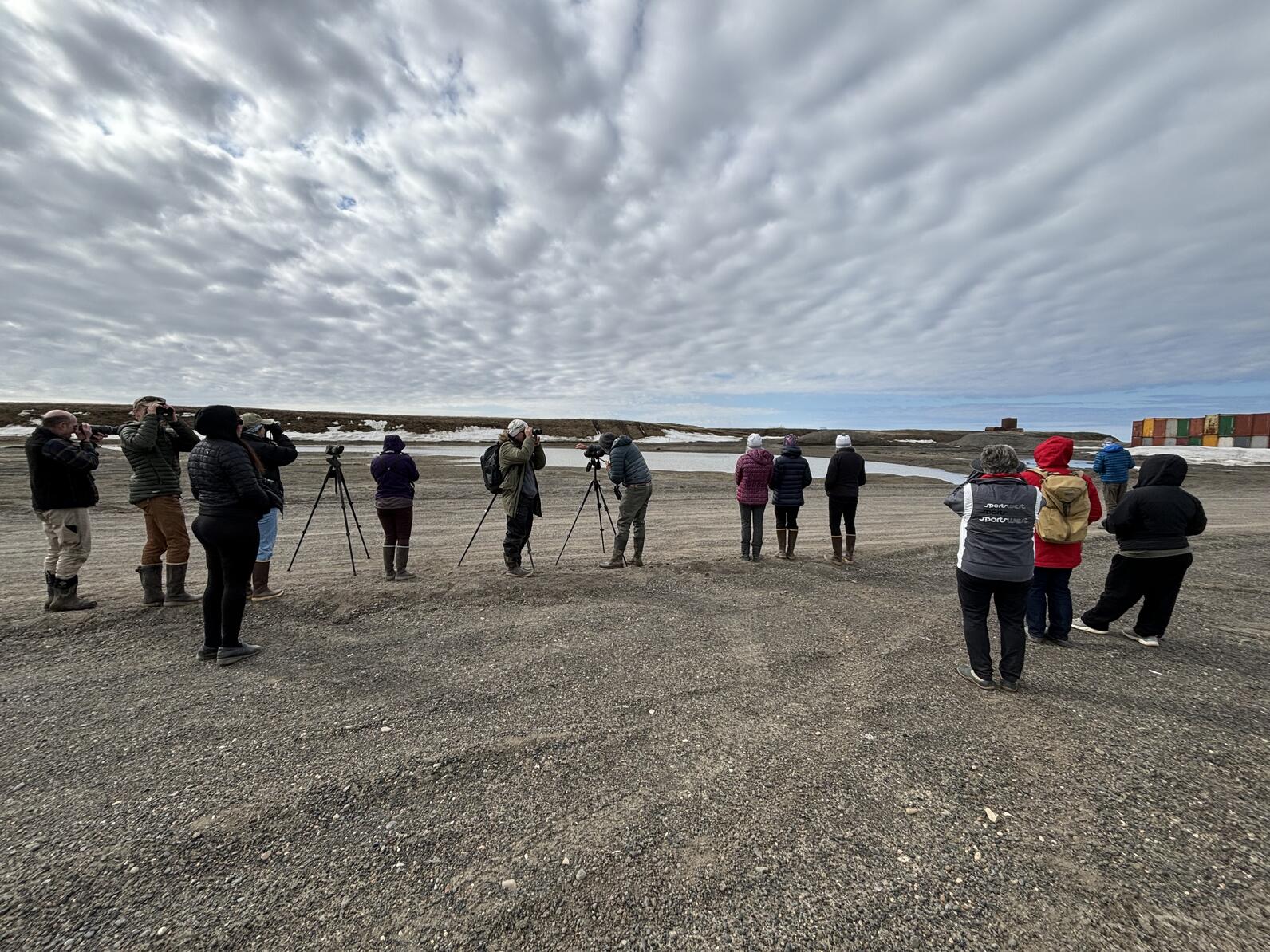
A Growing Movement
If you’d call birding in Utqiaġvik a casual hobby, you’d probably get a strange look from the people who’d traveled from around the country and world to get to this community on the edge of the continent. Seriously, just hang around the lobby at the Top of the World Hotel and talk to anyone with a pair of binoculars around their neck.
And they are not unlike many folks in the birding world right now.
As we always like to mention, the USFWS states that "96 million people (or 3 out of 10 Americans) engaged in birding, making up 37% of the population aged 16 and older" and that "in 2022, birders spent $107.6 billion on their activities." To focus on Alaska, the 2022-released study Small Sight—Big Might: Economic Impact of Bird Tourism found that in 2016, "nearly 300,000 birdwatchers visited Alaska and spent $378 million supporting approximately 4,000 jobs.”
And we suspect that the number has gone up since then, as birding has increased significantly during and since the COVID-19 pandemic.
“Birding is big business in Alaska because of the healthy, resilient public lands and waters of our state,” David Krause, Alaska vice president of the National Audubon Society, explains in a recent Alaska Business Magazine article. “These places offer a bunch of different habitat types and, as a result, allow for a rich diversity of bird species.”
These numbers reflect a growing awareness: Birding trails like the one in Utqiaġvik don’t just guide visitors to good birding spots; they can inspire advocacy and highlight the ecological importance of these areas.
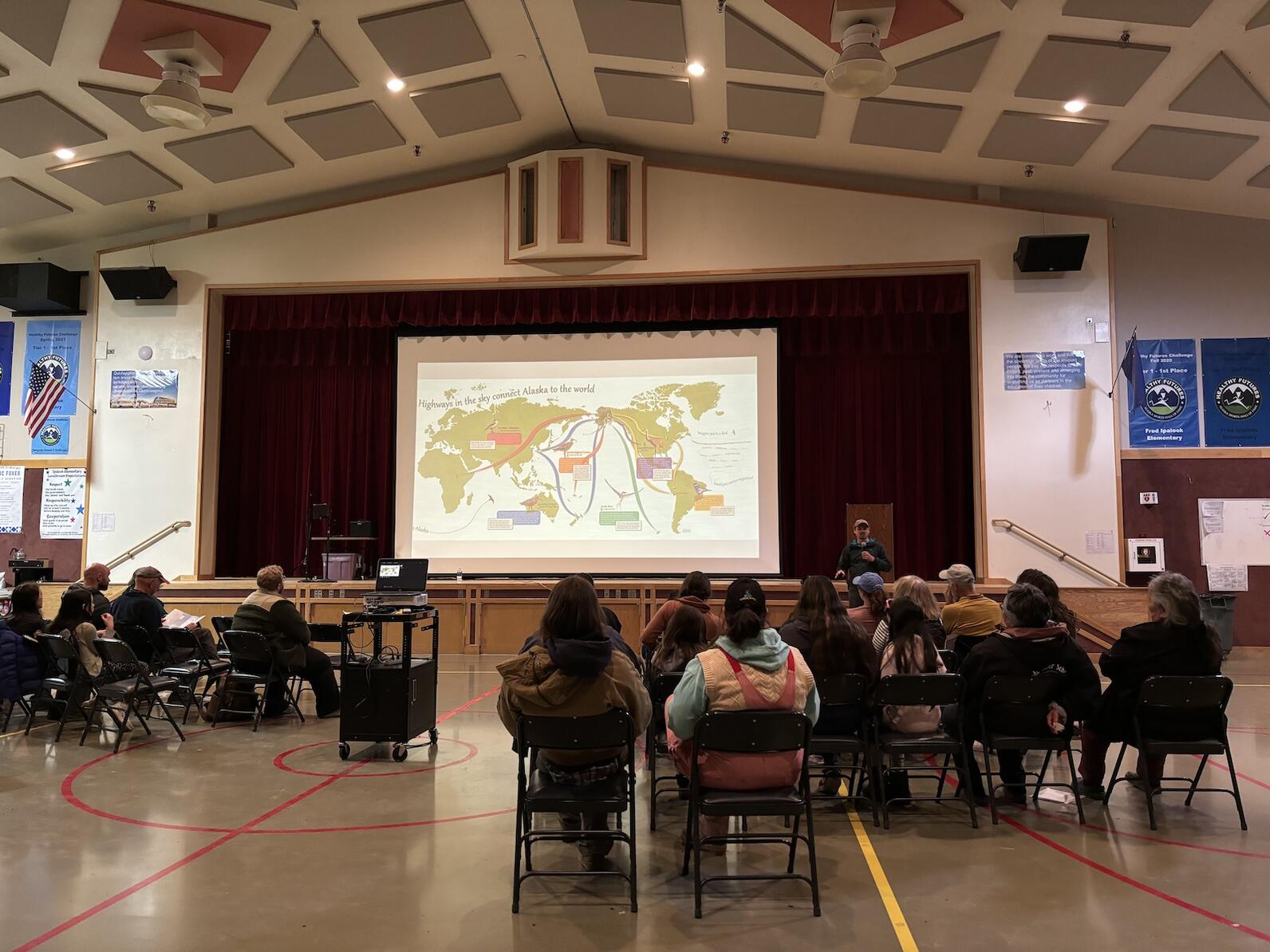
Coming Up …
As the third annual Utqiaġvik Migratory Bird Festival approaches in 2025, Audubon Alaska and other partners will be on the ground, sharing the new-but-old birding trail with seasoned birders, curious travelers, and—most importantly—members of the Utqiaġvik community.
Those not in Utqiaġvik this summer can view the trail online and learn more about the festival and related events through the Facebook page.








